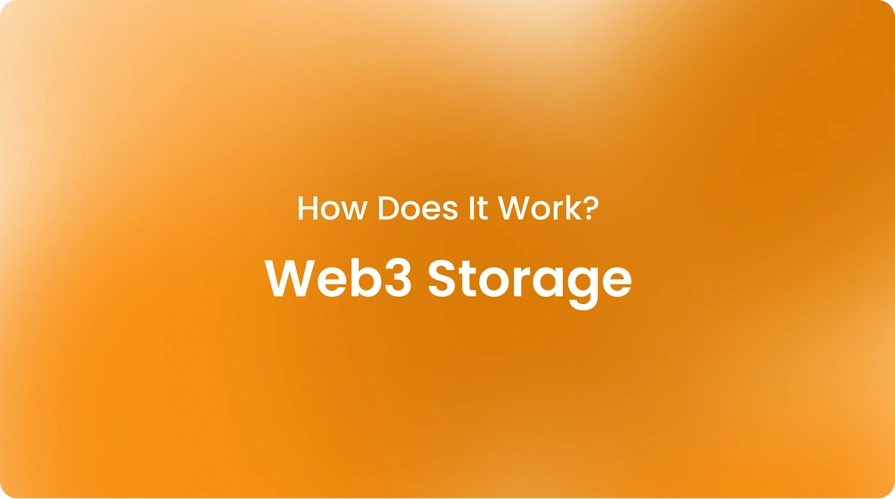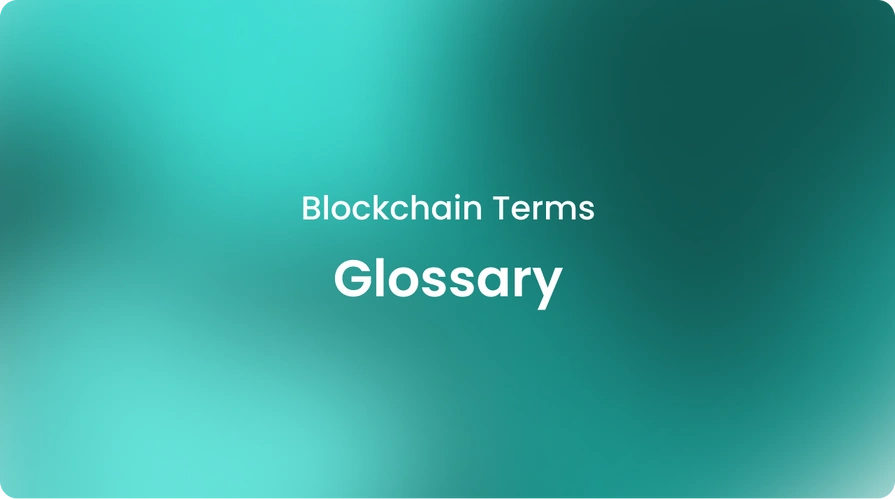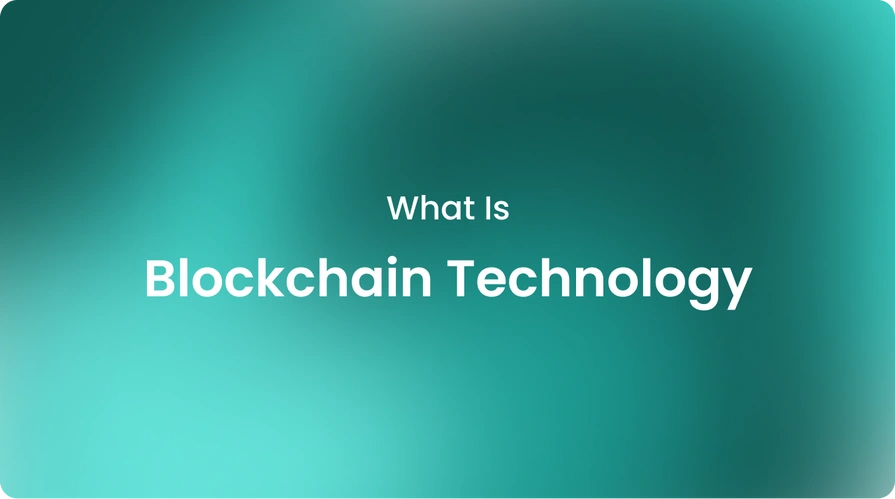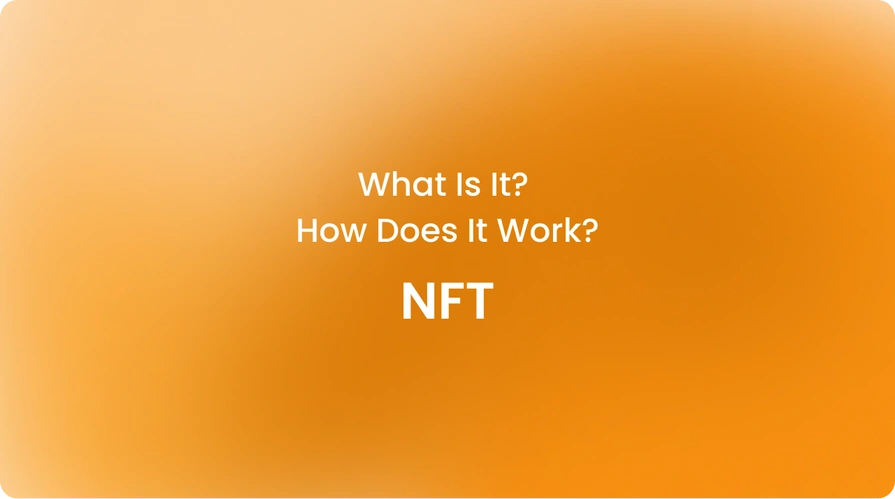|technology, knowledgehub
What Is Web3 Storage? How Does It Work?

Web3 and Web3 storage provide greater ownership and control of your data—one where games, virtual reality, and augmented reality interactions are safe from censorship and provide secure interactions for players.
Backed by blockchain technology, this decentralized web combines semantic web and AI technologies while also offering users the chance to own, trade, and use non-fungible tokens (NFTs), giving them greater control of their data while diminishing tech behemoths' influence over it.
You may check “crypto custody”, “crypto trading”, “What is tokenization?”, “cryptocurrency tokenization”, and "crypto coins vs. crypto tokens” for a more comprehensive approach to understanding Web3 and the vast blockchain technology ecosystem in general.
Web3 is an innovative vision of the future internet that uses blockchain technology to decentralize it. It offers users a safer and censorship-resistant means of browsing the web, as well as new business models.
Additionally, it benefits decentralized infrastructure ownership, native digital payments, self-sovereign identity protection, and more. Join us in this blog as we explore Web3, Web3 data, and Web3 storage in detail!
What is Web3 decentralization?
Web3 storage represents a breakthrough in decentralized technology. It seeks to return control of users' data back to them while giving them the technological freedom they deserve.
In a nutshell, the idea behind Web 3 is to have complete control over your data without worrying about hackers stealing it. Therefore, decentralization is an integral part of Web3 technology.
One of the primary issues associated with today's centralized internet is its susceptibility to censorship. Governments can shut down servers or limit bank account access if they suspect someone of violating official propaganda or expressing an opinion that goes against official lines.
Additionally, decentralized platforms cannot be shut down or censored as easily as centralized sites and apps can. This gives users more freedom to express their thoughts freely without fear of government intervention or bank account seizures. This freedom is also the aim of DeFi, DEX, and dApps.
How is data stored in Web3?
Web3 storage offers us the solution by storing our data on peer-to-peer networks that are both censorship-resistant and immutable, such as IPFS file storage protocols or blockchains.
Furthermore, non-fungible tokens (NFTs) are revolutionizing the gaming industry by giving players ownership over any in-game items they acquire through non-fungible tokens (NFTs) and gaming tokens.
Web3 lets you directly own digital assets with non-fungible tokens (NFTs). These give you direct control over digital assets and in-game items by requiring exclusive memberships or credentials that can be checked.
They can even be sold and traded in open markets, potentially creating a new economy online that values ownership over control.
To securely store your crypto assets and token assets, you can trust Cryptobunq. CBQ is a one-stop shop crypto service provider that you can rely on for your different crypto needs.
We enable you to meet all types of needs for Web3 with blockchain-powered crypto services, such as tokenization, exchange API, batch payments, custody and wallet, and more. At Cryptobunq, you can experience fast and secure Web3 storage solutions suitable for your individual and business needs.
Where is Web3 data stored?
Many believe blockchain to be at the core of web3 storage; however, other technologies may prove just as transformative in future years, including improvements to layer 2 scaling solutions, experiments with novel forms of governance, and revolutions in digital identity.
Web3 storage relies heavily on decentralized data storage. Instead of keeping files on servers owned by one company, files can instead be distributed across a network of computers that receive incentives to store and provide access to these files.
This lowers the chance of server crashes, hacking attacks, or censorship occurring. Check “centralized and decentralized storage systems” to have a better understanding of the benefits of decentralization and Web3 storage solutions.
Who owns the data in Web3?
Unlike current Web 2.0 models, which store information in centralized repositories that are easy for governments to control or shut down, Web3 is an improved version of the internet that connects data in a decentralized manner.
Web3 storage envisions decentralized data storage as one of its cornerstones, so files could instead be distributed over peer-to-peer networks where participants are incentivized to store files themselves—something IPFS and Filecoin provide.
Web3 data empowers individuals to become owners of decentralized protocols by giving them voting rights through governance tokens.
These tokens represent anything from memes or artwork pieces all the way up to tickets for events; they're stored securely in blockchain wallets that act like virtual identity cards.
Therefore, no one can claim ownership over your data or digital assets, unlike in the current web environment, where platforms may delete or censor your account.
If you are interested in the development of the internet, you may want to check out “Internet of Things (IoT)” and “Industrial IoT” to keep up with the innovations in Web3 technology and adapt to the present and the future.
Is Web3 always blockchain-based?
Web3 does not have to be blockchain-based. Web3 relies on decentralized infrastructure to host websites and applications. Instead of being housed on one centralized server, these sites are hosted across the internet by many devices simultaneously.
Then, users that participate in this process are awarded tokens as participation rewards, allowing them to earn income, make decisions collectively, vote on matters of significance, and gain real value through Web3 decentralization.
Web3 aims to build a new type of internet that is more secure, less susceptible to censorship, and prioritizes peer-to-peer connections over intermediary facilitation services.
Enthusiasts hope that Web3 will allow them to develop innovative apps more easily while decreasing their dependency on large tech firms.
However, it can be said that Web3 projects are related to blockchain technologies at the present. You should work with a reputable platform.
Cryptobunq is an expert crypto-friendly digital bank that enables you to adapt these innovations into your business with CaaS, WaaS, and NaaS solutions. As Cryptobunq, we offer great solutions for your Web3 storage projects and crypto investments.
What is the relationship between blockchain and Web3?
Web3 uses blockchain, an enabling technology for people to store, share, and trade digital assets securely. This enables a range of web applications, including decentralized finance (DeFi), prediction markets, and social networks with enhanced privacy features that resist censorship.
Many of these platforms also incentivize participants by offering cryptocurrency or other token rewards at various stages in their protocol. Web3 and blockchain are closely related financial terms.
Blockchain is at the core of Web 3. Although often confused with cryptocurrency, non-fungible tokens (NFTs), and other related assets, its impact extends far beyond these realms.
Blockchain represents a new wave of decentralized platforms and monetization models that aim to promote culture while challenging other figures’ dominance over the internet.
It is part of a grander vision for the internet's future, referred to by some as Web3, but there remain significant technological, environmental, ethical, and regulatory hurdles that must be cleared before reaching an idealized remaking of the web.
What is the use of cryptocurrencies in Web3 storage?
To access Web3 applications, users need a crypto wallet that stores private keys and public "addresses", acting as login credentials on behalf of their users and eliminating unnecessary and inefficient intermediaries from the process.
These wallets allow users to sign onto networks directly without intermediaries to facilitate authentication processes, saving both time and energy while creating more security than before. Therefore, they can use crypto in Web3 storage and secure crypto assets at the same time.
Web3 is an innovative vision for the future internet that seeks to increase user control over their data and content by moving away from centralized technology platforms like YouTube and Facebook.
Blockchain ledgers, which are open digital books that can check transactions securely, and cryptocurrency, or non-fungible tokens (NFTs), which let people own unique digital assets, can help reach this goal.
If you desire to advance your Web3 storage and adapt your business into the future with expert blockchain-powered solutions, you can trust CBQ and contact us!













